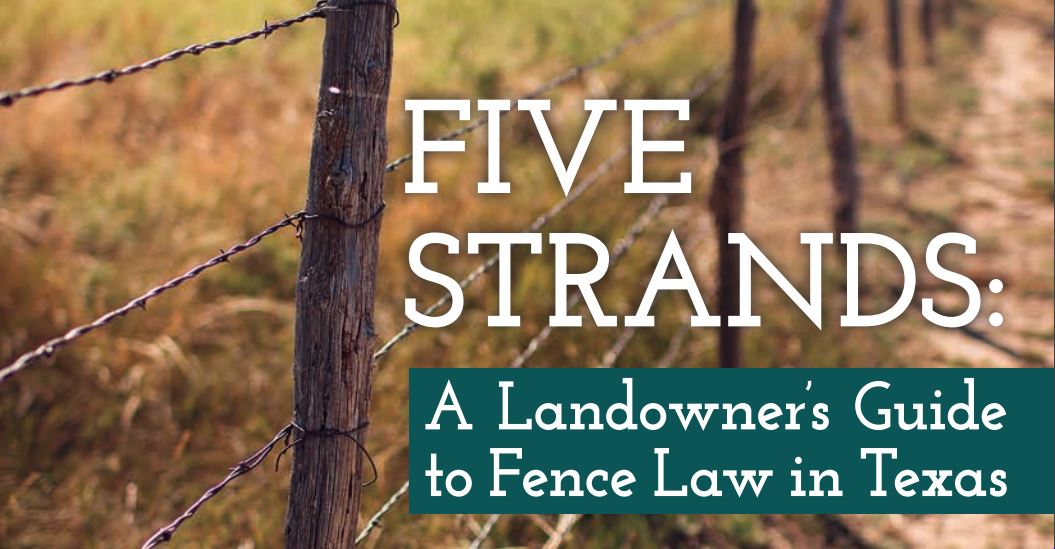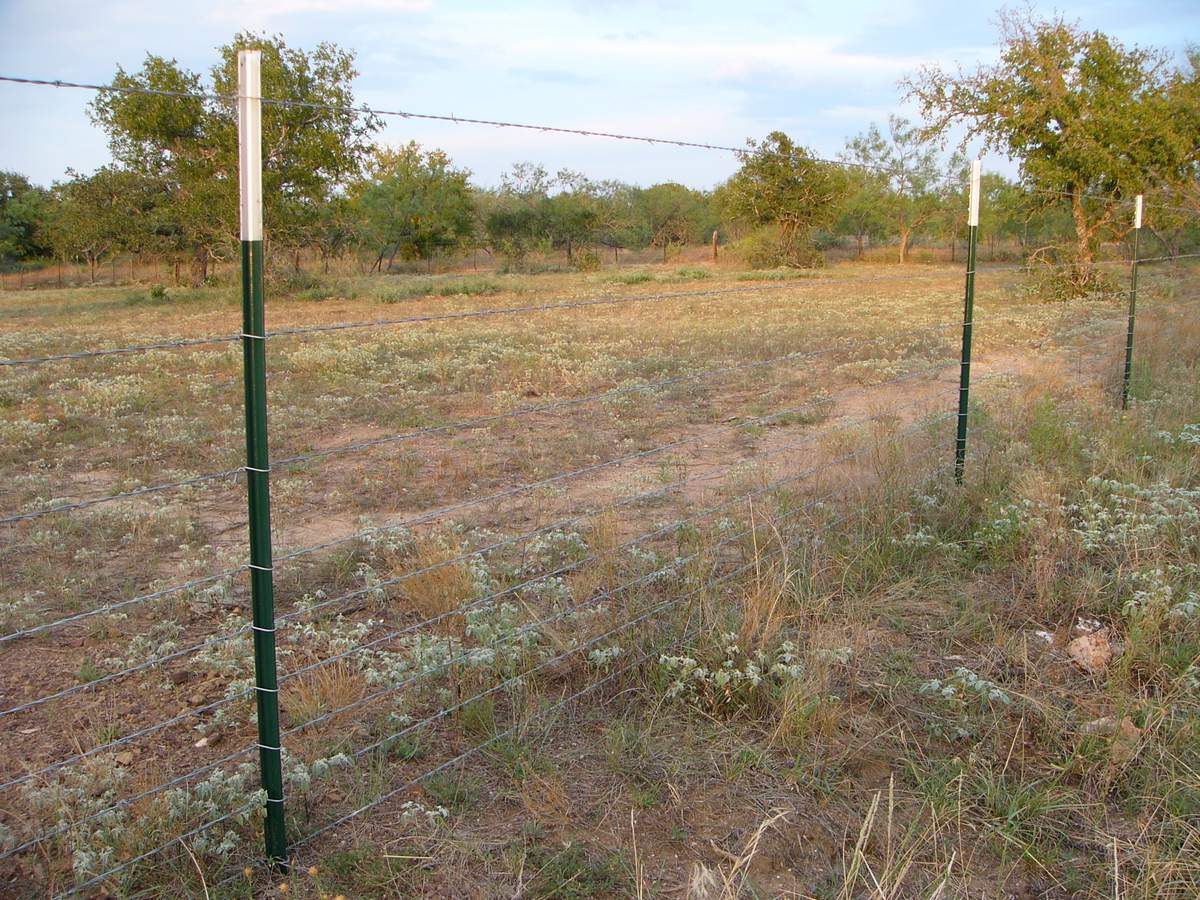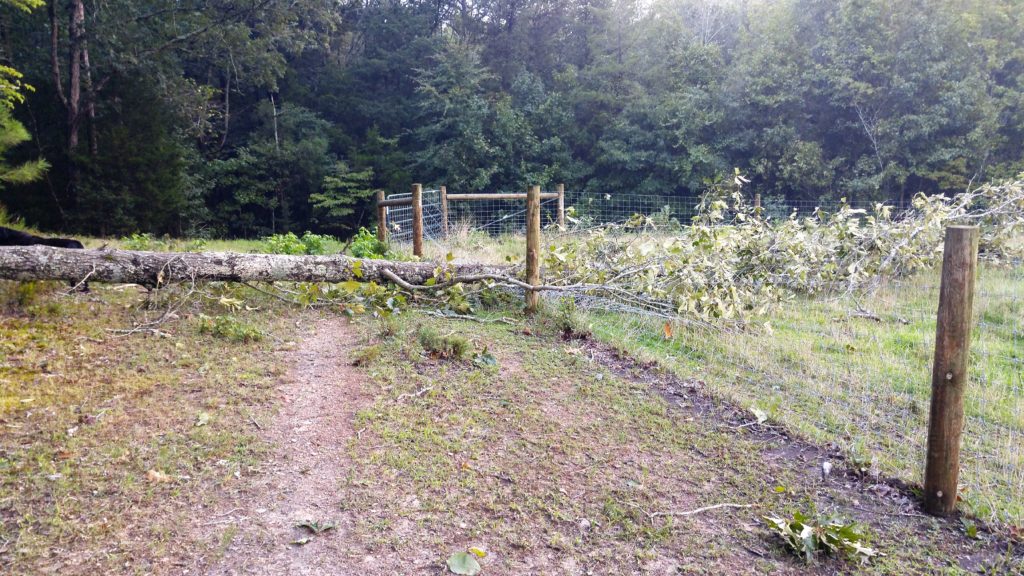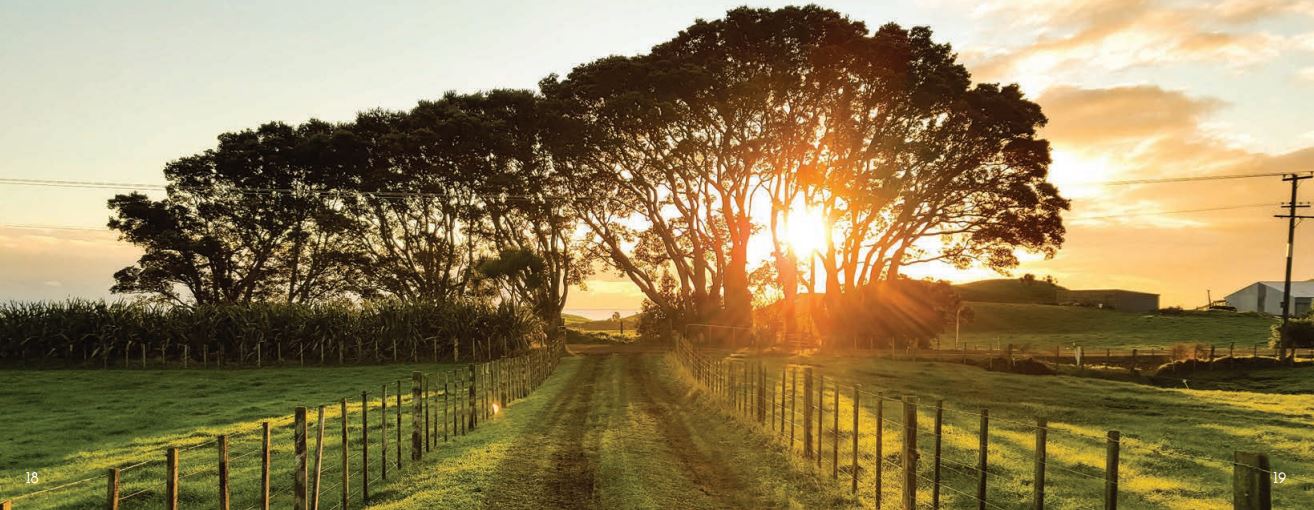Fences in Texas
Whether you use your land for livestock grazing , white-tailed deer management or both, it’s a good idea to have a handle on Texas’ fencing laws. We’ve all heard the saying, “good fences make for good neighbors,” but even good folks with pretty good fences can get sideways when it comes to disputes over unforeseen situations, property lines and “extra” livestock.
Have you ever wondered if a landowner is liable if his livestock get out and are hit on the road? Can a landowner make a neighbor chip in and and pay for repairs to a shared boundary fence? What should a property owner do when someone else’s cattle are on their land? Or what can I do about my neighbor’s tree limbs hanging over the fence and onto my property?

Texas Fence Law Answered
There will come a time for every Texas landowner when having some general knowledge about fencing laws will come in handy. Fortunately, a new publication titled Five Strands: A Landowner’s Guide to Fence Law in Texas is now available to help landowners make sense of some of the more common issues property owners face across the Lone Star State.
The best thing—this handbook was written in terms that normal people can understand. It is designed as a resource that can be thrown on the dash of a pick up along with a ranchers’ other important documents. This publication provides answers to common questions related to fence law that come up frequently for Texas landowners and livestock producers.
Below are a several examples from the handbook:
My neighbor’s cattle are on my land. How do I remove them?
The answer depends on whether this situation occurs in an open-range county or in one that has passed a stock law making it a closed range.

Lessee Liability?
Many Texas livestock producers lease the land they they run their livestock on. This presents a question of who is responsible for fencing the land the livestock run on–the landowner or the lessee? Absent an agreement allocating responsibility between the landowner and the lessee, these laws could apply to both the landowner and the lessee who runs the livestock on a ranch.
How do the adequate fence standards of the Agriculture Code apply?
The Texas Agriculture Code establishes the requirements for a “sufficient fence;” however, these fencing standards apply only in open-range counties where fences are meant to keep livestock “out” rather than “in.”17 These sufficient fence standards do not apply in a closed-range county, nor can they be used to determine negligence or liability in a roadway accident situation.
Clearing Brush to Build a Fence on a Boundary Line
Sometimes a landowner building a fence along a boundary line must clear brush on both his or her own property and the neighbor’s property. If this is necessary, the landowner should always seek permission from the neighbor before entering his or her property and before any brush management takes place.
Without such permission, entering a neighbor’s property and removing the brush could be considered trespassing and subject the acting landowner to damages. It is always better to ask for permission ahead of time. If permission is denied, the landowner may have to back the fence up on his or her property.

Cutting Down a Tree Hanging over a Property Line
Assume that a tree grows on the neighbor’s property, but the limbs and branches overhang another’s land. What rights do the parties have in that situation? In Texas, the location of the trunk of the tree determines who owns it, even if the roots or branches grow onto an adjoining neighbor’s land. A landowner has the right to trim or cut off the limbs or branches of boundary trees or brush that reach onto his or her property, as long as no damage to the other adjoining landowner occurs.
However, the limbs or branches can be cut back only to the property line. The tree’s owner is responsible for any damages caused to the adjacent owner from falling branches or roots. It is in the best interest of the tree’s owner to control the growth of the tree so it does not create a source of potential damage to the neighboring landowner.

Hi, my neighbor has leaned his old fencing on our shared fence line. As a result, the fence is starting to buckle in the middle. I have asked nicely that he remove the boards.
He has not yet. Am I within my rights to push the boards off the fence?
Stella, this is a great question but I don’t know the answer. My recommendation would be to contact the local police department, or more likely, the county sheriff. I bet the latter will have an answer for you. Best of luck!